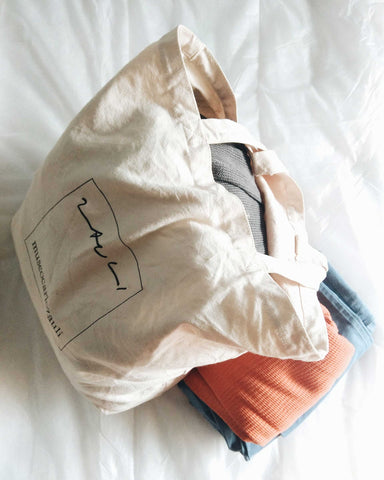Whether you’re caring for a child or an adult with incontinence, there are a few things to know that will make this easier for you. If you're looking for specific strategies and advice on caring for someone with incontinence, this post is for you.

Knowledge, Empathy & Support Systems for Incontinence
Over 400 million people suffer from incontinence worldwide. Many of them feel shame or embarrassment around their condition.
By understanding what it’s like for someone dealing with incontinence, you’ll have an easier time supporting the person you’re caring for. By knowing what they’re going through, you’ll be able to better practice patience and empathy.
It’s not uncommon for people to hide their incontinence, even from their caregivers, so by creating a supportive and understanding environment for them, you’ll help them cope and make life easier for yourself too.
Remember that the person you’re caring for is not doing this on purpose. It’s not their fault that they have incontinence and it’s not a sign of weakness. Instead, it’s a natural response from the body, especially as a person ages or experiences certain illnesses or injuries.
The person you’re caring for might be looking for treatments or ways to cope with this on their own. Discuss this openly with them. What strategies, if any, have they tried? What are their struggles? How can you support them? These are all great questions to ask, especially if you’re new to caring for someone with incontinence.
Lastly, they might be curious about their condition and want to understand it better – what it feels like and what that means for the “type” of incontinence they have, what to expect in terms of lifestyle changes and habits, etc – help them with this. Facilitate research, take them to the doctor to determine the type they have, or encourage them to join an online support group or forum.
Forums or support groups are a great place to meet other people who understand what it’s like to live with incontinence – people with similar pain points and experiences who can help them feel less alone and offer strategies for coping with incontinence. Here are some groups that can provide support:

Clothing & Incontinence Products
People with incontinence might feel like they’re missing out on life – going to movies and restaurants, staying active, and visiting with friends. (In the age of covid, don’t we all?)
They have to plan all of their outdoor activities around incontinence, which can affect the quality of their life. Finding the right clothing and incontinence products won’t make the problem go away, but it will make coping with it so much easier, both for you and them.
There are so many incontinence products on the market. It can feel overwhelming to get started, so here are a few things to know as you embark on this journey.
- Find the right underwear – technology has advanced and adult diapers are more discrete and absorbent than ever. Decide if it makes more sense to do disposable or machine-washable underwear, and then do your research on the products out there. Read reviews. Read online forums. Find out which products are likely to be a good fit for the person you’re caring for, keeping in mind their lifestyle and body. Different products work better for different people. Try samples or buy small quantities until you find the right fit.
- If you’re going with disposable products, order them online by the case. You’ll save money and time this way.
- Invest in odour eliminators. Some companies make odour eliminators specifically for urine. They’re made up of enzymes that neutralize the air. Keeping these around your home will help the air stay fresh and clean.
- For longer outings or nighttime, get a machine-washable incontinence mat. Let’s say you’re going on a long car ride or going to the movies. Bring an incontinence mat along to prevent leakage onto the seat. The small PeapodMat is the perfect size for this.
- Buy the person you’re caring for black bottoms – pants, shorts, dresses, or athleticwear. Black hides leaks best. Not blue, not grey, not green. Black.
We hope these hacks will help make life a little better for the person with incontinence while making clean up a little easier for yourself.
One more thing to remember about planning outings. Keep a bathroom schedule when you’re out and about!
That might mean accompanying them to the bathroom once every hour, or planning ahead what the bathroom situation looks like at the venues you plan on attending. A lot of places have strict bathroom policies, so make sure you know where you can go, and where you’ll have to buy something first.
Self-Care for Caregivers
We saved the best for last.
It’s so important that you take time out for yourself and practice patience and empathy for yourself. Caring for someone with incontinence is hard, messy, and tedious at times.
Seek support from friends or family members. If there’s anyone else involved in their care that can take over from time to time, take breaks. Even the best caregivers need to look after themselves too.
Join online caregiving forums to talk to other people who are going through this too. Find healthy ways to relieve your stress, like a gym or a meditation practice. And if you think it will help, seek professional counseling. There’s no shame in getting outside support.
You’ve got this!

